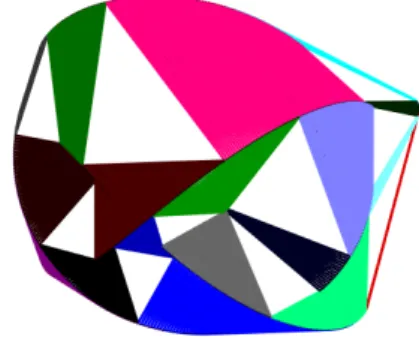Computing convex hulls of trajectories
Texto completo
Figure




Documento similar
Classically, integral geometry in Euclidean space deals with two basic questions: the expression of the measure of planes meeting a convex domain, the so-called Crofton formulas;
On measures with compact support the representation (4.1) holds and the right-hand side of (4.1) is strictly convex as a function of µ. JAC acknowledges support by the EPSRC
The first result about the asymptotic behaviour of convex domains in H 2 (−1) was given in 1972 by Santal´ o and Ya˜ nez ([SY72]) for a family of h-convex domains (a convex domain
where Z is the number of trajectories used to compute the cost function (the 180 trajectories included in the training dataset); i represents an individual trajectory completed by
For each concave part there are two vertices, the previous and next vertices belonging to the convex hull. The segment line that joins these vertices is called the cover. If we
So we have obtained a comparison result between the capacity of a convex body in M and the capacity of a round ball in the Euclidean space via the previous comparison of the
Lattice points in some special three-dimensional convex bodies with points of Gaussian curvature zero at the boundary.. Lattice points in three-dimensional convex bodies with points
It has been tried to compute the three-dimensional location of people in a room using four different methods to get the two dimensional information from the image of each



